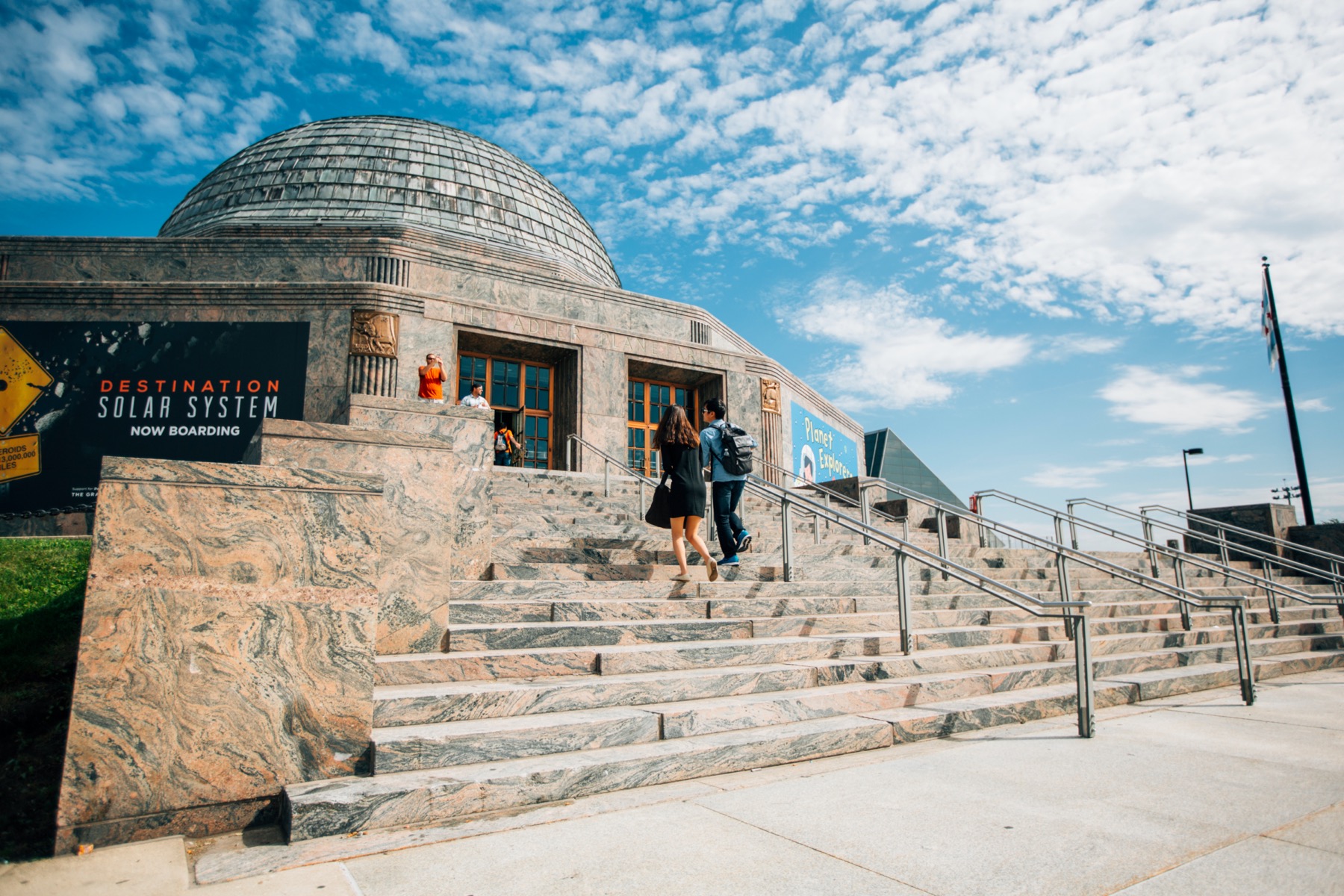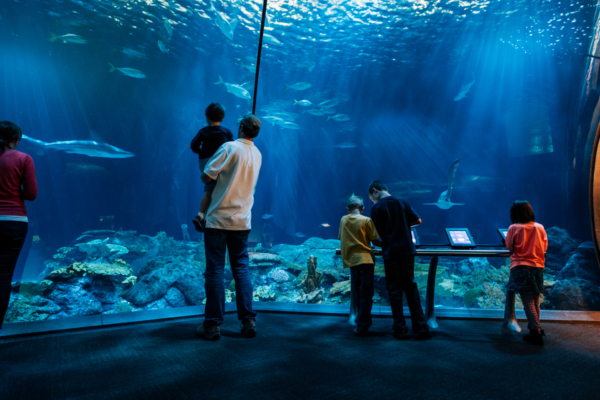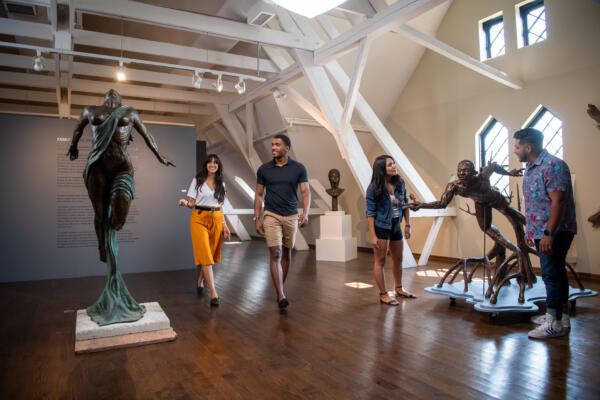Extending out into Lake Michigan from its Museum Campus home, Adler Planetarium is America’s first planetarium and it has become a recognized leader in science education. Immersive theater programs, special exhibitions, and events such as lectures and viewing parties allow you to journey through the vast universe – from the depths of powerful black holes to the heights of Voyager 1, the farthest human-made object from Earth.
Make a day of the Adler Planetarium – its stunning terrace views and unique sculptures on campus are stunning. Or make a night of it at special events such as Adler After Dark and Doane at Dusk.
Theatre programs
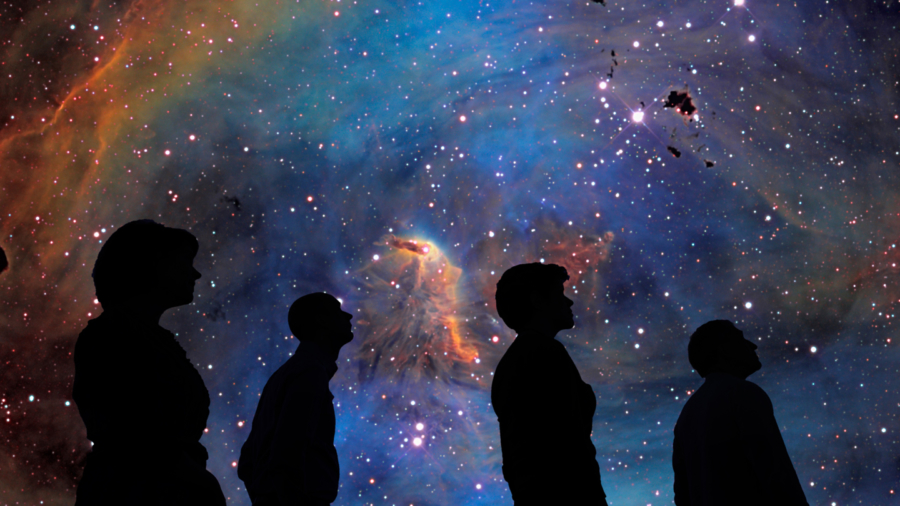
The museum is home to three full-size theaters: including the new Grainger Sky Theater, fashioned as a virtual observatory, the all-digital projection Definiti Space Theater and the 3D Universe Theater.
Destination Solar System
In this live show, it’s the year 2096, and space tourism is available to everyone. “Space Express Tours,” the first tour company in deep space, offers a variety of adventures including its most popular, Destination Solar System. Tours of the hottest hot spots and the coldest, stormiest and most spectacular sights in the Solar System await curious space explorers.
Planet Nine
Get to know Pluto, our solar system’s most mysterious dwarf planet. New Horizons space craft made the voyage in July 2015, capturing the first up-close images of the distant planet. Now, Planet Nine allows audiences to discover the unknown and decipher those images alongside CalTech’s Mike Brown and his team.
Skywatch Live
A live presenter shows you the night sky over Chicago, teaching you how to navigate by starlight, giving you insight into the stars behind your favorite constellations, and allowing you to witness the incomprehensible vastness of the Universe without ever leaving your seat.
Welcome to the Universe
Gain insight into your place in this jaw-dropping cosmic landscape. With the guidance of a live presenter, “you’ll explore the Pleiades star cluster, sail past the Andromeda galaxy, navigate the galaxies of the Coma Cluster, and discover hidden wonders of the Universe.”
One World, One Sky: Big Bird’s Adventure
Join Big Bird and Elmo on an unforgettable journey to the Moon and back! Find the Big Dipper and the North Star along with your Sesame Street favorites.
Exhibits
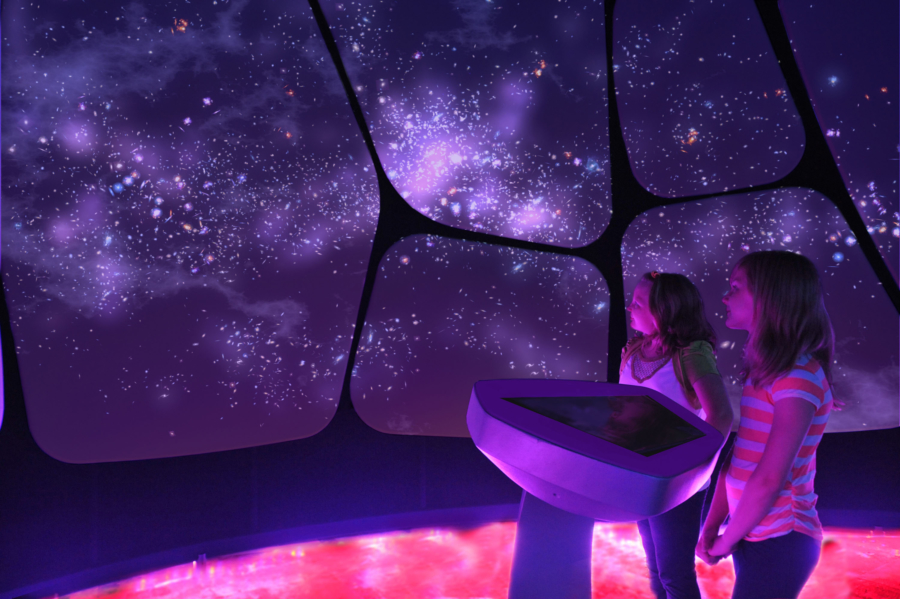
Mission Moon
Learn about America’s first moon landing and experience an astronaut’s journey through the perspective of Captain Lovell. In this interactive exhibit, you can launch a rocket, hurry to rescue Apollo 13, peek into the real-life spacecraft Gemini 12, and witness what it takes to be one of the first men on the moon.
What is a Planet?
Adler poses the question, “Did Pluto get a raw deal?” Now’s your chance to cast your vote and explore the dilemma: “If Pluto isn’t a planet, then what is it?” What is a Planet? was awarded first place in the British Society for the History of Science’s 2016 Great Exhibitions Competition for its innovation and engaging content, which draws on cutting-edge research to provide a fascinating and immersive visitor experience. This exhibit is open through October 21, 2018.
Our Solar System
“Our meteorite traveled millions of miles to get here. The least you can do is come touch it.” A compelling point! This meteorite isn’t the only piece of the Universe you can get your hands on in Our Solar System. There are Moon rocks, pieces of Mars, and even the chance to learn about the robotic rover that’s been investigating the surface of the red planet since 2012.
The Universe: A Walk through Space and Time
Explore the evolution of the Universe over 13.7 billion years. The sense of scale will leave you in awe! Begin by passing through a cosmic timeline that spans from the Big Bang to modern day, while exploding stars swirl with each step you take through the luminous tunnel. The exhibit opens into various interactive stations, allowing you to control the overhead projections with the scroll of a finger on a touch screen. From photographic telescopes to intergalactic e-postcards, the technology relates to visitors across different ages and leaves you with a sense of interconnectedness.
Planet Explorers
This is the most hands-on exhibit ever created for families at the Adler, with three educational play areas to engage and entertain children ages 3-8.
Telescopes: Through the Looking Glass
Featuring some of the world’s most important telescopes and their extraordinary beauty and technology.
Community Design Lab
The lab allows you to dive into challenges, experiment, and play. Not only do you learn about science, but you also become the principal investigator in your own scientific research.
Clark Family Welcome Gallery
The environment here is constantly changing, with surreal architecture and vibrant lighting, video presentations, and interactive, motion-sensing displays. It’s also home to frequent pop-up exhibitions where you can learn more about the Universe you live in.
Astronomy in Culture
Medieval European and Middle Eastern stargazers invented spectacular tools like the cannon sundial, the astrolabe, and the armillary sphere to understand and interact with the Universe. In Astronomy in Culture, you’ll travel back in time and get to know some of these curious and creative people.
Adler Planetarium, 1300 S. Jean Baptiste Point du Sable Lake Shore Drive

